Cloud Computing Overview
It does seem at present that the word on everyone’s lips is the various cloud computing service types and it’s not surprising due to their many advantages.
Offering your business not only cost reductions for your server/application hosting needs when compared to the traditional on-premise data centre model but also provides additional resiliency, diversity, agility and simplification of platform management.
Cloud computing allows your company to utilise servers, applications and other resources securely over the Public Internet or alternatively across a private network without the need to actually own the physical hardware or Data Centre premises.
Each of the cloud computing service types we will be discussing is supplied and managed by a third-party provider who is responsible for maintaining and supporting the platform.
Benefits of Cloud Computing

But what are the benefits of each of the cloud computing service types and which one will suit the specific needs of your business?
First, let’s cover the benefits of using cloud-based services over traditional local server or legacy data centre models, then we delve deeper into the various flavours on offer and how they can help your business goals.
1. Network as a Service (NaaS)
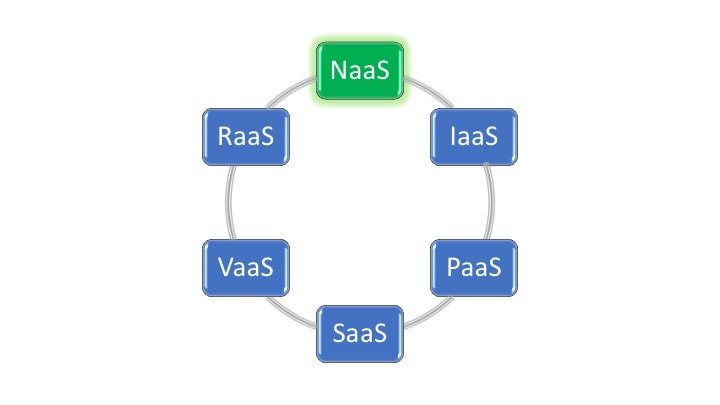
Although not a hosted server/application cloud-based service model, I feel Network as a Service (NaaS) needs a quick introduction at this point.
The NaaS model allows your business to outsource the day-to-day burden of running your Wide Area Network (WAN) connectivity. You can even outsource your LAN infrastructure if required.
The network provider becomes responsible for your overall network connectivity when using Network as a Service so you can enjoy savings in time, cost, overall simplification and performance gains.
The Benefit of ‘On Net’ Cloud Computing
Why do I bring up the subject of NaaS at this point?
All of the following cloud based services we will shortly cover can be provided in 2 distinct models:
- Securely over the Public Internet
- ‘On Net’ via your providers private network
NaaS providers such as Amber-Networks are also capable of providing you with hosted cloud services over high speed connections directly from our core network (‘on net’).
This means that the traffic for your hosted cloud services do not have to traverse the Public Internet, but traffic rather travels directly from your site to your NaaS providers network, and then directly to your hosted cloud service (such as IaaS, PaaS, SaaS, DaaS, RaaS, VaaS that are all discussed next).
2. Infrastructure As A Service (IaaS)
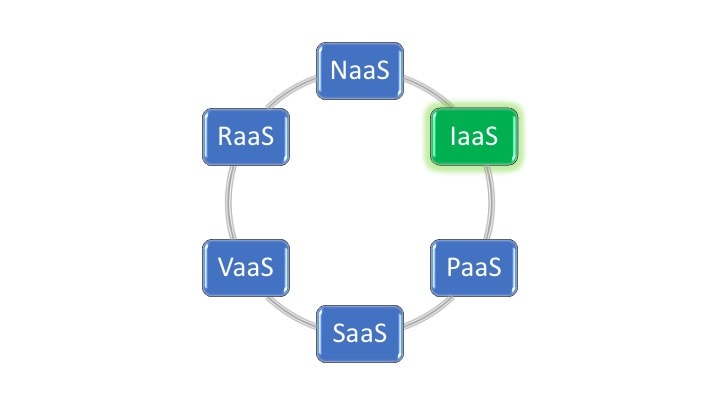
With Infrastructure as a Service, the provider is responsible for the physical equipment traditionally present in an on-premise data centre such as network hardware, physical servers & storage and usually includes the server virtualization aspect also (Hypervisor).
A quality provider will place your resources on multiple distributed servers located in different data centres for increased service resilience.
Your IT team are responsible for managing the server operating systems, applications, and the data that runs on top of the IaaS service model.
A wide range of additional services can also be made available to you where needed, such as enhanced server monitoring, load balancing, resiliency and backup/recovery.
3. Platform As A Service (PaaS)
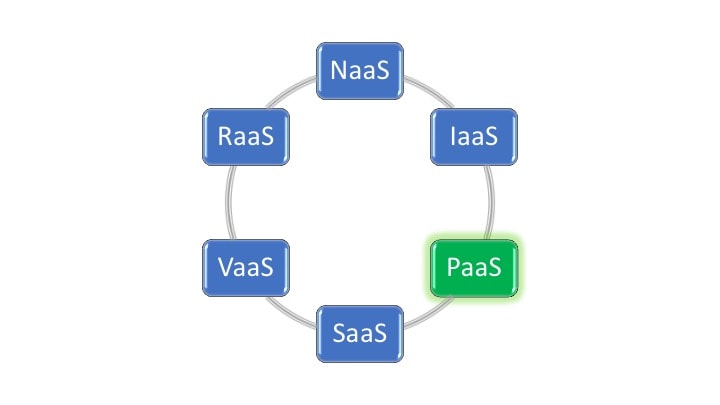
PaaS builds upon IaaS where the provider is responsible supplying more of the application stack than with IaaS. This normally includes supplying the virtual server’s operating systems and other software services such as back end databases that may be required.
This model is geared more towards application development and support as it allows your IT team to be able to concentrate solely on the top layer application rather than the more mundane tasks such as provisioning servers, troubleshooting server operating system issues, allocating storage and arranging backup schedules.
Your IT team are only responsible for the top layer applications and the associated user data.
4. Software As A Service (SaaS)
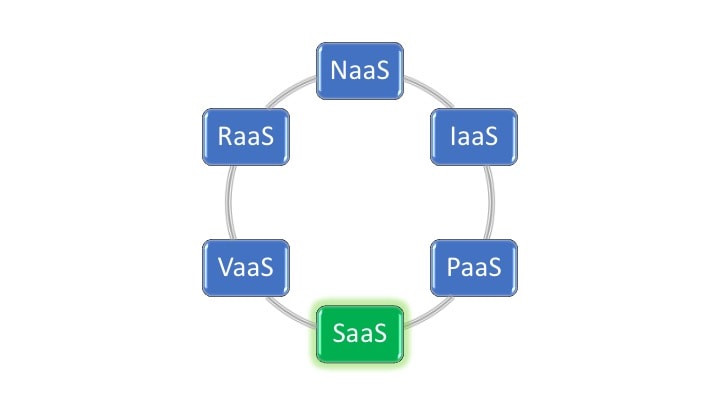
SaaS builds still further upon both IaaS and PaaS whereby the provider supplies and maintains the whole application stack, including all required business applications that are hosted in the cloud.
Your end users will access all of the applications and services that are hosted by the SaaS provider via the Internet or a private network. Although all applications are supported and managed by the cloud provider, your IT team can customise the application to suit your specific business requirements.
Your IT team are only responsible for the bespoke changes to the top layer applications and the associated user data. The cloud provider are responsible for the application itself.
5. Desktop as a Service (DaaS/VDI)
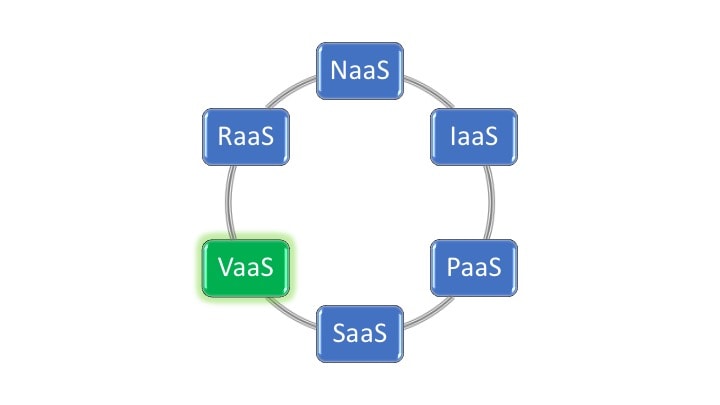
We have now discussed IaaS, PaaS and SaaS which all relate to cloud based server and application hosting. One further step that is becoming increasingly popular is removing most of the desktop support element from your local IT Team by using ‘Desktop as a Service’.
DaaS is a service model where the provider hosts, manages and supports the Virtual desktop Infrastructure/VDI environment and delivers that service securely either over the Public Internet or via a private network
Your IT team can manage your own virtual desktop images and applications or have the provider perform that function for you.
6. Recovery as a Service (RaaS)
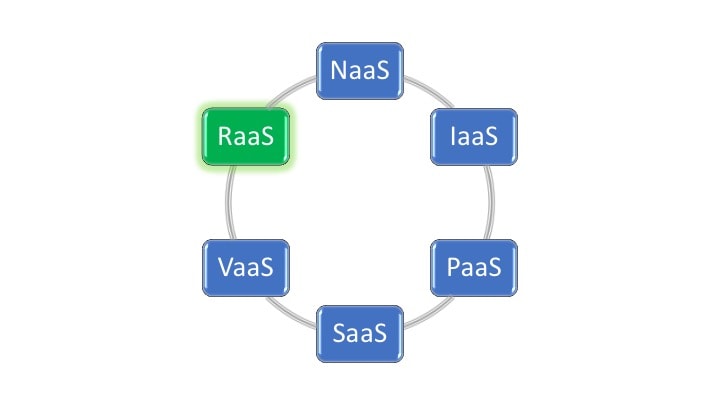
The Recovery as a Service (RaaS) model (also known as DRaaS) allows you to use a single managed platform for all of your backup and disaster recovery needs. The RaaS providers platform will allow you to backup and recover server operating systems, applications and databases.
RaaS is a cost-effective backup model that can help your business reduce the impact of downtime due to hardware and application failure by providing back up services of critical data and applications.
RaaS can replicate your production services to a diverse backup infrastructure so transition to the backup environment is quick and seamlessly.
Summary of Cloud Computing Services
Each of the various cloud computing service types offers unique benefits perfectly aligned for almost all businesses large and small. It can reduce the strain on local IT Services, remove the unnecessary cost of equipment ownership, and simplify overall support.
Looking To Increase Website Traffic?
If you would like to learn more about how Amber Networks can help to increase traffic to your website, please get in touch.

